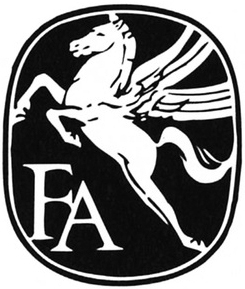
Fairchild was an American aircraft and aerospace manufacturing company based at various times in Farmingdale, New York; Hagerstown, Maryland; and San Antonio, Texas.
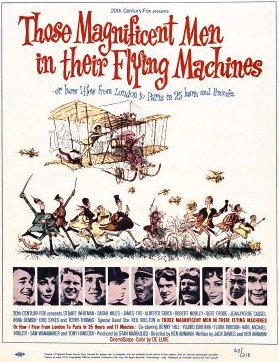
Those Magnificent Men in their Flying Machines; Or, How I Flew from London to Paris in 25 Hours and 11 Minutes is a 1965 British epic period comedy film that satirizes the early years of aviation. Directed and co-written by Ken Annakin, the film stars an international ensemble cast, including Stuart Whitman, Sarah Miles, Robert Morley, Terry-Thomas, James Fox, Red Skelton, Benny Hill, Jean-Pierre Cassel, Gert Fröbe and Alberto Sordi.
Empire Airlines is a cargo and former passenger airline based in Hayden, Idaho, near Coeur d'Alene. It operates over 120 scheduled cargo flights a day in 18 US states and Canada. Empire also operated passenger service within Hawaii, under the name "Ohana by Hawaiian", between 2014-2021 in partnership with Hawaiian Airlines. Its main base is Coeur d'Alene Airport with a hub at Spokane International Airport. The company slogan is We Can Do That.

A bush airplane is a general aviation aircraft used to provide both scheduled and unscheduled passenger and flight services to remote, undeveloped areas, such as the Canadian north or bush, Alaskan tundra, the African bush, or savanna, Amazon rainforest and the Australian Outback. They are used where ground transportation infrastructure is inadequate or does not exist.
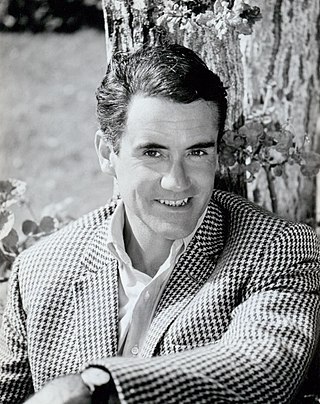
Ian Edmund Bannen was a Scottish actor with a long career in film, on stage, and on television. He was nominated for an Academy Award for his performance in The Flight of the Phoenix (1965), the first Scottish actor to receive the honour, as well as two BAFTA Film Awards for his performances in Sidney Lumet's The Offence (1973) and John Boorman's Hope and Glory (1987).

Albert Paul Mantz was a noted air racing pilot, movie stunt pilot and consultant from the late 1930s until his death in the mid-1960s. He gained fame on two stages: Hollywood and in air races.

The Flight of the Phoenix is a 1964 novel by Elleston Trevor. The plot involves the crash of a transport aircraft in the middle of a desert and the survivors' desperate attempt to save themselves. The book was the basis for the 1965 film The Flight of the Phoenix starring James Stewart and the 2004 remake titled Flight of the Phoenix. The Flight of the Phoenix came at the midpoint of Trevor's career and led to a bidding war over its film rights.

The C-82 Packet is a twin-engine, twin-boom cargo aircraft designed and built by Fairchild Aircraft. It was used briefly by the United States Army Air Forces and the successor United States Air Force following World War II.

The Fairchild C-119 Flying Boxcar was an American military transport aircraft developed from the World War II-era Fairchild C-82 Packet, designed to carry cargo, personnel, litter patients, and mechanized equipment, and to drop cargo and troops by parachute. The first C-119 made its initial flight in November 1947, and by the time production ceased in 1955, more than 1,100 had been built.

Frank Gifford Tallman III was a stunt pilot who worked in Hollywood during the 1960s and 1970s. He was the son of Frank Gifford Tallman, Jr. and Inez Evelyn Foster.

John Stringfellow was a British early aeronautical inventor, known for his work on the aerial steam carriage with William Samuel Henson.
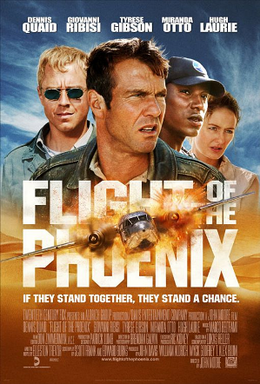
Flight of the Phoenix is a 2004 American survival drama film directed by John Moore and written by Scott Frank and Edward Burns. The film is a remake of the 1965 film of the same name, both based on the 1964 novel The Flight of the Phoenix, by Elleston Trevor, about a group of people who survive an aircraft crash in a desert and must build a new aircraft out of the old one to escape. It stars Dennis Quaid, Giovanni Ribisi, Tyrese Gibson, Miranda Otto and Hugh Laurie.
Sherman Mills Fairchild was an American businessman and investor who founded over 70 companies, including Fairchild Aviation, Fairchild Industries, and Fairchild Camera and Instrument. Fairchild made significant contributions to the aviation industry and was inducted into the National Aviation Hall of Fame in 1979. His Semiconductor Division of Fairchild Camera played a defining role in Silicon Valley. He held over 30 patents for products ranging from the silicon semiconductor to the 8-mm home sound motion-picture camera. Fairchild was responsible for inventing the first synchronized camera shutter and flash as well as developing technologies for aerial cameras that were later used on the Apollo Missions.
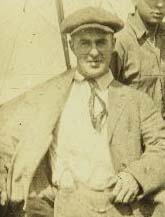
Otto William Timm was a California-based barnstormer and aircraft manufacturer of German descent. Charles Lindbergh's first flight was flown by Timm. Timm partnered at times with his brother Wally Timm who did a lot of flying for the nascent Hollywood movie industry.

The Fairchild XC-120 Packplane was an American experimental modular aircraft first flown in 1950. It was developed from the company's C-119 Flying Boxcar, and was unique in the unconventional use of removable cargo pods that were attached below the fuselage, instead of possessing an internal cargo compartment.
Stunt flying refers to any stunts performed in an aircraft. It encompasses aerobatics, wing walking, and transferring from one airplane to another or to a moving vehicle on the ground, such as an automobile or train, and vice versa.

The Tallmantz Phoenix P-1 was an FAA-certified one-off aircraft built for the 1965 film production The Flight of the Phoenix and used in the picture's final aerial sequences. Its pilot Paul Mantz was killed in an accident during a touch-and-go maneuver to simulate a takeoff, after which the plane was replaced by a crudely modified North American O-47A.

The Fairchild 82 and the 34-42 Niska were a family of utility aircraft produced in Canada in the mid-1930s, based on designs by Fairchild Aircraft Ltd. (Canada)'s parent company in the United States.

Amelia Earhart is a 1976 American biographical drama television film directed by George Schaefer and written by Carol Sobieski. It stars Susan Clark as Amelia Earhart, and John Forsythe as her husband, George P. Putnam.

The Hagerstown Aviation Museum is an aviation museum at the Hagerstown Regional Airport in Hagerstown, Maryland. It is focused on the history of the Fairchild Aircraft Corporation.

















